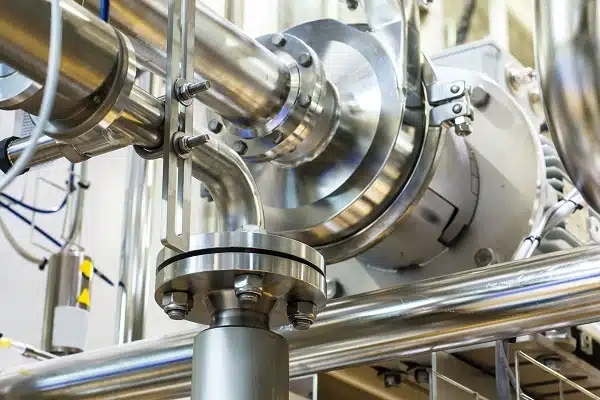316 stainless steel
Type 316 stainless steel is an austenitic chromium nickel stainless steel containing molybdenum. This addition increases general corrosion resistance, improves resistance to pitting from chloride ion solutions, and provides increased strength at elevated temperatures.
Properties are similar to those of Type 304 except that this alloy is somewhat stronger at elevated temperatures. Corrosion resistance is improved, particularly against sulfuric, hydrochloric, acetic, formic and tartaric acids; acid sulfates and alkaline chlorides.

| USA | JP | DE | EUR | CN |
|---|---|---|---|---|
| ASTM | JIS | DIN | EN | GB |
| 316 | SUS316 | X2CrNiMo 18-14-3 | 1.4404 | 022Cr17Ni12Mo2 |
Chemical Composition
The typical chemical composition is shown in the table below.
| Grade | Standard | 201 Chemical Composition | ||||||||
|---|---|---|---|---|---|---|---|---|---|---|
| C | Si | Mn | Cr | Ni | P | S | Mo | Others | ||
| ≤ % | ≤ % | % | % | % | ≤ % | ≤ % | ≤ % | % | ||
| 316 | ASTM A240 | 0.03 | 0.75 | 2.0 | 16.0 – 18.0 | 10.0 – 14.0 | 0.045 | 0.03 | 2.0 – 3.0 | N≤ 0.10 |
| 1.4404 | EN 10088-2 | 0.03 | 1.0 | 2.0 | 16.5 – 18.5 | 10.0 – 13.0 | 0.045 | 0.015 | 2.0 – 2.5 | N≤ 0.11 |
| SUS316 | JIS G 4304 | JIS G 4305 | 0.03 | 1.0 | 2.0 | 16.0 – 18.0 | 12.0 – 15.0 | 0.045 | 0.03 | – | – |
Mechanical Properties
The mechanical properties are given in the table below.
| Grade | Standard | 201 Mechanical Properties | ||||
|---|---|---|---|---|---|---|
| Tensile Strength (MPa) ≥ | Yield Strength 0.2% (MPa) ≥ | Elongation >% | Hardness HRB ≤ | Hardness HB ≤ | ||
| 316 | ASTM A240 | 485 | 170 | 40 | 95 | 217 |
| 1.4404 | EN 10088-2 | 490 | 190 | 40 | 95 | 215 |
| SUS316 | JIS G 4304 | JIS G 4305 | 480 | 175 | 40 | 90 | 187 |
Properties &Typical Applications
Type 316 stainless steel is an austenitic chromium nickel stainless steel containing molybdenum. This addition increases general corrosion resistance, improves resistance to pitting from chloride ion solutions, and provides increased strength at elevated temperatures.
Properties are similar to those of Type 304 except that this alloy is somewhat stronger at elevated temperatures. Corrosion resistance is improved, particularly against sulfuric, hydrochloric, acetic, formic and tartaric acids; acid sulfates and alkaline chlorides.

